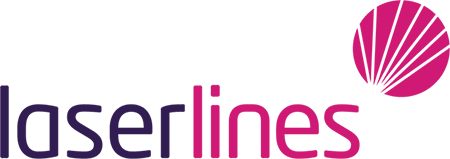Whatever industry you work in there is likely to be at least one instance where some information – be that serial numbers, barcodes or branding – needs to added to a product. This can certainly be a challenge to implement effectively with ideal materials, trying to achieve your goals when working with plastics can feel even more difficult and frustrating.
If you are going through the extra effort of including information on a product, whatever that may be, there is generally a desire for this to be legible for as long as possible and ideally permanent. This may be for branding purposes, regulatory requirements or even traceability, once products are out in the field it is often useful to be able to work out where they have come from a few years down the line.
(We have covered the increasing importance of traceability in manufacturing in an earlier blog post which can be found here: http://www.laserlines.co.uk/laser-marking-traceability/)
As mentioned above there are some characteristics of plastic materials in particular that make this goal of permanence difficult to achieve with traditional methods. First port of call for these applications is typically using inks, which at the best of times may struggle to stay legible against the test of time. When you take into account that a number of popular engineering plastics such as PP, PE, HDPE and UHMWPE have inherently low adhesion to inks, then this method becomes less and less likely to offer successful results.
Where inks fail some users will look to employ labels or adhesive stickers to achieve their requirements; again, this is not without its pitfalls. Labels are typically expensive consumable products when compared to other methods and can potentially introduce another manual process into your production flow. Automated label printing and application systems generally require large up-front investment, along with continued consumable costs such as inks and stickers, leaving this as an unsuitable option for many customers to implement.
Why consider laser marking?
So why should you consider laser marking if you are faced with this sort of requirement in your manufacturing process? First and foremost, laser marking can offer fast, highly precise and permanent results on a wide range of plastic materials. These can be introduced into a manual or fully automated process with minimal disruption to production. Additionally, one of the most beneficial features of laser marking is the complete lack of consumables. Paired with the high efficiency and comparatively low power consumption of modern laser systems, the long term saving can be huge when compared to inks or labels.
If you are interested in discussing anything raised here or have any other questions regrading laser marking or how it may be able to benefit you and your applications then please do not hesitate to get in touch.
Email: Jackh@laserlines.co.uk, Call: 01295 672588

